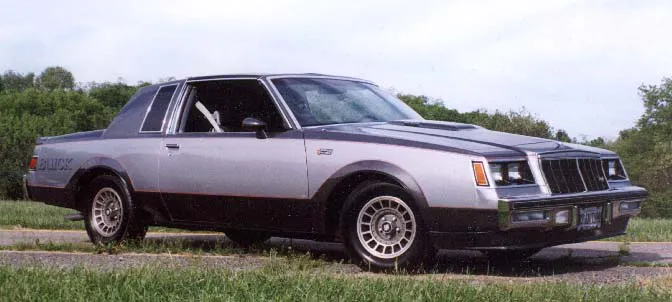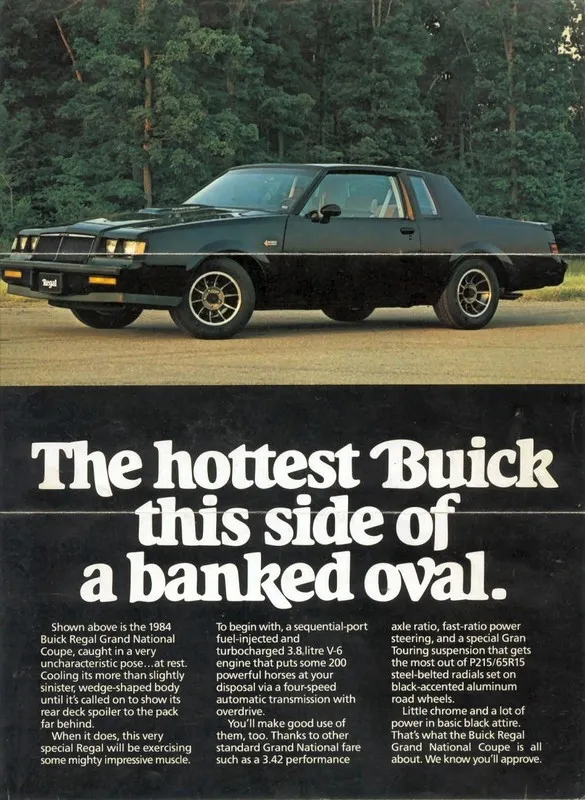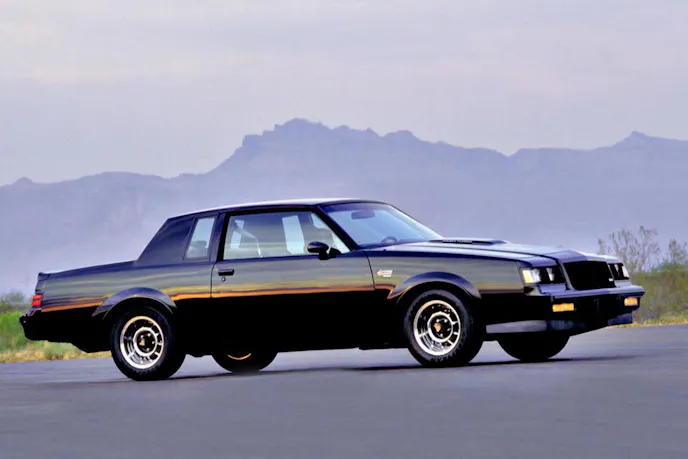 During the first golden era of motoring, conventional wisdom about high performance dictated that big displacement, eight cylinder motors were installed the engine bays of coupes across the Big Three’s portfolios. These roaring brutes had a lot of charm to go along with their prodigious grunt, but their reign would prove to be rather short lived.
During the first golden era of motoring, conventional wisdom about high performance dictated that big displacement, eight cylinder motors were installed the engine bays of coupes across the Big Three’s portfolios. These roaring brutes had a lot of charm to go along with their prodigious grunt, but their reign would prove to be rather short lived.
The combination of skyrocketing insurance premiums, tightening government regulations, and the Arab Oil Embargo all conspired to put an untimely end to the first muscle car era by the mid-1970s, and the automotive industry was still reeling from the blow well into the following decade.
While the muscle car era was defined by the mantra that there’s “no replacement for displacement” in the mid-1980s Buick would prove this adage wrong when it unleashed the turbocharged, V6-powered Grand National and range-topping GNX upon the enthusiast world. It was a car that put the fear into Detroit’s finest eight-cylinder hardware of the day not only because of its shockingly capable performance, but also because of its sinister monochromatic aesthetic, which would earn it the unofficial title of “Darth Vader’s car.”
The Road To Boost
Buick began its initial foray into forced induction in 1978, when it took the fairly unassuming Regal coupe and installed a turbocharger on its 3.8-liter V6. Still hampered by technological limitations and smog restrictions, the motor still only made 165 horsepower in its most potent form, but Buick’s engineers saw serious potential in the combination and continued to pursue the venture.
After Buick took home the NASCAR Winston Cup Series manufacturer’s title in 1981 and again 1982, the company decided to launch a limited-edition version of the ’82 Regal and dubbed it the Grand National. Although it was initially equipped with an anemic 4.1-liter naturally aspirated V6 that offered a mere 125 horsepower, it boasted a performance tuned suspension and a sporty look that would help set the stage for an upcoming legend in Buick lore.

The Grand National would sit out the 1983 model year so that the engineering team could really set to work whipping the car into shape, and in 1984 Buick unveiled their latest interpretation of the coupe. Now powered by that 3.8-liter turbocharged V6 and making a much more respectable 200 horsepower and 300 pound-feet of torque, the car also received an extensive visual rework that resulted in its iconic Darth Vader-esque black paint, trim and wheel treatment.
Better To Burnout Than Fade Away

The Grand National continued essentially unchanged for the 1985 model year. In 1986 the Grand National got a performance bump to 235 horsepower and 330 pound-feet of torque, which would be raised again in 1987 to 245 ponies and 355 pound-feet of torque. By now the Grand National was already boasting enough performance to put V8-powered performance models like Ford’s Mustang GT and even the Chevrolet Corvette on notice, but with production of the G-body platform that underpinned the Grand National scheduled to end in 1987, Buick wanted this special model to go out with a bang.
The result was the Grand National Experimental, or GNX. From the outset of the GNX project Buick knew this would be a limited edition collector’s car, and designed it to be the “Grand National to end all Grand Nationals.”
To get even more from that turbocharged V6, Buick teamed up with McLaren Performance Technologies to crank the 3.8-liter’s output to an official spec of 276 horsepower and 360 pound-feet of torque by way of a custom ECU tune, a special Garrett T-3 turbocharger, larger capacity intercooler, and a low restriction exhaust system.
Along with a reworked Turbo Hydramatic 200-4R transmission with a custom torque converter and a transmission cooler to handle the additional power, the GNX also received unique badging, a set of BBS wheels, VR-rated Goodyear tires and uniquely-tuned rear suspension to help put the power to the ground during drag strip launches.

As manufacturers were prone to do during the muscle car era, the Grand National and GNX performance numbers were markedly underrated by Buick, with official performance figures pegging the Grand National at 0-60 mph in 6.9 seconds and a quarter mile time of 15.7 seconds, while the GNX was listed at 5.4 seconds to 60 mph and a quarter mile run of just over fourteen seconds.
But testing by various automotive publications would prove that both the Grand National and GNX had significantly more performance than Buick’s numbers would indicate, and they likely played coy about the cars’ capability in order to avoid casting a shadow over General Motors’ flagship performance coupe, the Chevrolet Corvette.
With reportedly little effort, Road & Track was able to knock out 0-60 runs in six seconds flat with a quarter mile time of 14.7 in the Grand National, and the GNX dished out 60 mph sprints in under five seconds and blasted through the 1320 in the mid-13 second range at 104 mph. To put this performance in the context of the era, the factory production street car that offered faster acceleration than the GNX at the time was the Lamborghini Countach.
It was later proven by independent dyno tests that Buick had significantly underrated the engine’s output, and crank output was shown to be in excess of 300 horsepower and 420 pound-feet of torque.
Buick Performance Legacy
A mere 547 examples of the GNX were built in 1987, and as planned, it was the sole year of production. Given its rarity and unique place in performance history, it comes as little surprise that both the Grand National and GNX have increased in value significantly since the late 1980s.
In fact, pristine examples of the GNX have been known to fetch more than $150,000 at auctions in recent years – a far cry from the $29,900 original sticker price which, at the time, was a hefty sum for a hopped up Buick Regal.
As far as the nameplate goes, the Regal continues to live on at a front-wheel drive based sedan based on the Opel Insignia. After the well received debut of a turbocharged all-wheel drive version of the fifth generation Regal GS, which features a six-speed manual gearbox and a 270 horsepower turbocharged version of GM’s EcoTech 2.0-liter four pot, rumors began to circulate about the possibility of a Grand National and/or GNX model coming to market in the next few years.
While it appears those plans with the existing Regal platform have been shelved for the time being, Buick unveiled the Avista performance coupe concept earlier this year at the Detroit Auto Show, which continues to provide some hope to the notion that a resurrected GNX may in fact see the light of day in the next few years.

“The Avista embodies the dynamic soul of Buick,” says Duncan Aldred, head of Buick sales and marketing. “It is a modern expression of the brand’s heritage of sophisticated performance, communicated with beautiful elegance.”
Keep your fingers crossed.
You might also like
PRI 2025: Build A High HP Godzilla With Ferrea's Competition Plus Series
Ferrea supports the growing Ford Godzilla market with the Competition Plus series, delivering a robust valvetrain solution.


